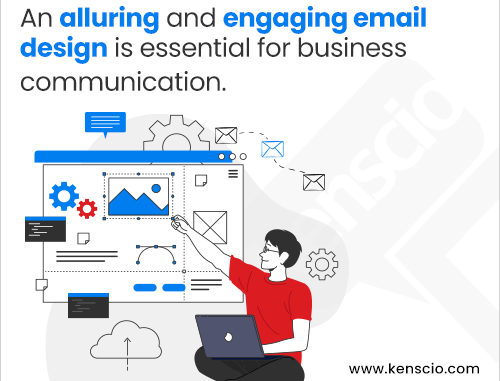
Top Seven Email Design Mistakes
Email design is a tricky feat. There are a lot many things to remember when designing your marketing communication. Here are 7 simple ways to improve your email design.
Mistake 1: Header image not relevant
A good header image is the first thing your target audience notices when they open your email. An adequately designed banner image can either let you retain your audience or hit the back button. Therefore, your email should have an aesthetically pleasing and key business message relevant header.
Here is an excellent example of an email header image:
(Source: Email from Adidas)
Mistake 2: Too many images
The biggest culprit in email design is the use of excessive images. While images help increase click-through rates, relying entirely on images creates its own set of problems.
Not all inboxes automatically download images. Email providers use AI to tag emails as spam with high numbers of images. The end-user must turn on downloading as a setting, or images are never downloaded automatically. In emails with too many photos, the critical message often resides within those images. Images blocked mean loss of the vital business message and call to action.
Suppose your email design balances text with images using the 60/40 or 70/30 rule. In that case, there will be significantly fewer problems in terms of conversions. Remember, the content carries the main message; using fewer images does not disrupt your key message or call to action.
Mistake 3: Too much text
Your audience is busy, especially with most of the world working remotely from home. You have just a few precious seconds after they open your email to tell them what it’s all about.
If your audience has to scroll through too much content, they will abandon your message and go do something else. A well-written email is short, to the point, and encourages the reader to click the call to action.
The objective is not to make the end-user read the entire email. Instead, gently guiding them to click the available call to action. Too much text hides and creates an obstacle for the target audience from quickly moving through and completing the conversion.
Moderation is the key; an overload of text can and would enable the email service provider’s spam filters. In extreme cases, your domain and IP addresses can also be blocked.
So how much is too much? It’s about the yin and the yang. The industry standard is the 60/40 rule, where your email should have 60% text and 40% graphics. Although it won’t guarantee your campaign email will land in the inbox, it helps by keeping the design light and looking good.
Mistake 4: Too many colors
The colors being used in your email design must look professional and be as per the brand guidelines to give your email a consistent look across the marketing channels. Use up to a maximum of 2-3 colors, and if you wish to use more, stick to light and subtle colors.
Mistake 5: Spelling errors
Spelling mistakes are a big no-go for emails. The email content, headline, call to action, footer, and everything else should be error-free, grammatically correct text. Having a well-structured content flow enables the end-users to glance at your emails and understand the business message. Checking for spelling and formatting before hitting the send button should be second nature.
Mistake 6: Broken links
Any link that enables your users to visit your website, landing page, or social media page is essential for email conversions. If your email has broken links that do not land on the correct address or show any error when clicked leaves a wrong impression on the user. Additionally, including too many links and CTAs could confuse your readers about what they are expected to do.
Mistake 7: Email is not responsive and device-agnostic
More than 50% of all emails are now opened on mobile devices. Hence, your emails need to look flawless on all devices, not just desktops or laptops. It becomes pertinent to design emails that are responsive and are device-agnostic.
The emails should be single-columned with a maximum width of 500 to 600 px. Testing for responsiveness on multiple devices and email clients ensures smooth rendering as the errors found in the resting phase can be fixed.
Here is an example of the desktop and mobile versions of an email from Photobox:
(Source: booking.design)
Since 2017 email has shifted majorly to mobile, along with users going to mobile exclusively. IIf your emails aren’t mobile-ready, your audience is likely to give up on and not complete their user journey leading to loss of conversion.
Making emails responsive is the easiest way to ensure better conversion and business generation.
Most third-party email marketing platforms offer mobile-responsive templates that can be used readily. Responsive thinking creates a better experience for desktop users, as well.
In conclusion
These are a few significant reasons your emails are performing poorly, failing to serve their purpose. Re-think, re-write, re-design, look for the mistakes and correct them.
In the end, a well-designed email should have a clear and concise copy, minimum design elements, attractive images, and prominent calls to action. Keep these reasons in consideration in your subsequent emails, and you will certainly hit the jackpot.

Leave a Reply